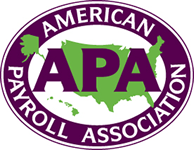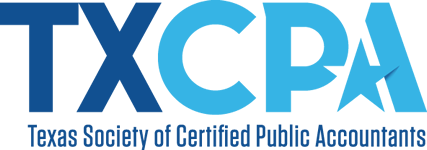The business entity you chose or will choose will determine several things about the way you process payroll. There are four standard entities for businesses and we will highlight each one of them and their unique attributes in relation to payroll.
If you have not chosen the entity type for your business I suggest that you consult with a CPA who specializes in small business as well as an attorney who also specializes in small business to discuss all of the legal, tax, accounting, and liability aspects of all types of entities in relation to your particular needs and circumstances.
Corporation
A corporation is a business entity that is owned by a shareholder(s), that is to say, people who own shares of stock. The shareholder(s) elect a board of directors to oversee the corporation’s actions and hire executives to run the day-to-day operation. In many cases in small business corporations, the shareholders, the board of directors, and the officers are the same people. The corporation is liable for the actions and finances of the business, the shareholders are not.
There are two standard classifications of corporations.
- Subchapter C (C-Corp) corporations, which pay taxes as an entity, and
- Subchapter S corporations (S-Corp), which is a pass-through entity.
More about an S-Corp
The S-Corp pays no Federal Income Taxes.
The gains and/or losses are “passed through” to the shareholders. The Form 1120S, which is the Federal Corporation Tax Return for S-Corps will have a Form K1 for each shareholder. The K1 will be used to report the Corporation earnings/losses on the shareholder’s personal tax returns. Many small business owners use Subchapter S corporations as they can reduce employment taxes, including Social Security and Medicare, for the shareholders
For employment tax purposes, an S-Corp shareholder who works in the corporation (other than minor services) is an employee.
He remains a shareholder as well. It allows for savings on Social Security and Medicare taxes because such taxes need not be paid on distributions of earnings and profits from the corporation to its shareholders. Thus, to the extent they pay themselves shareholder distributions instead of employee salary, S-Corp shareholders/employees can save money on payroll taxes. The downside is that it may also reduce their Social Security Benefits when (if) they draw Social Security benefits.
It’s up to the people who run an S-Corp, its officers and directors, to decide how much salary to pay the corporation’s employees.
When you are employed by an S corporation that you own (alone or with others), you may be the one making this decision.
In fact, 70% of all S corporations are owned by just one person, so the owner has complete discretion to decide on his or her salary.
However, the IRS insists that the employee/shareholder must be paid reasonable compensation, that employment tax is withheld and paid on for the work the employee/shareholder does. Only after reasonable compensation is paid can the corporation pay distributions to the employee/shareholder. Distributions are not subject to employment tax but will be reported as income on the employee’s/shareholder’s personal tax return.
A lot of S-Corp owners go too far and pay only distributions to avoid any employment tax at all on what the employee/shareholder takes out of the corporation for personal use.
If the IRS feels that an employee/shareholder has taken too little wages and too many distributions the IRS will “recharacterize” the distributions as wages and require payment of the employment taxes plus penalties that can equal 100% of the taxes then due.
Partnership
Standard General Partnership
The standard general partnership is an entity where two or more people combine money, assets, skills, and other resources. The partners then share the profits and/or losses in accordance with the agreement between the partners. If there is no agreement then the assumption is that the partners share equally.
General Partners
General partners, as opposed to limited partners, are personally responsible for all the liabilities that the partnership incurs.
A Partnership pays no taxes. The gains and/or losses are “passed through” to the partners. Form 1065, which is the Federal Partnership Tax Return, will have a form K1 for each partner. The K1 will be used to report the Partnership earnings/losses on the shareholder’s personal tax returns.
Partnership Payroll Classification
Partners are never employees for payroll purposes. The partnership may have employees that the partnership will pay and collect taxes on and from. The partners will pay “Self-Employment Tax” on the profits reported by the partnership on their personal tax returns.
There are other forms of partnerships where there are limited partners who share based on the partnership agreement in the profits and/or losses but are not liable for the liabilities that the partnership may incur.
Sole Proprietorship
The sole proprietorship is the simplest entity in which to operate a business.
A sole proprietorship is not a separate legal entity. It just denotes an individual who owns and operates a business. A sole proprietor is personally responsible for all of the liabilities of the business they operate.
The sole proprietorship is a popular entity in that it is simple, cheap, and easy to set up. Simply go into business in many cases without anything other than doing business.
Since a sole proprietorship is just its owner, taxation is simple.
The sole proprietor reports all of their income and expense on a Schedule C of their Form 1040. Self-employment taxes are calculated on any gain and are equivalent to employment taxes that they would pay, if on the payroll.
A sole proprietor is never on the payroll in their own business. No employment taxes are withheld from distributions the sole proprietor takes. The sole proprietor pays self-employment tax, which is Social Security and Medicare taxes, on their individual Form 1040 every year.
Limited Liability Company (LLC)
An LLC is a hybrid entity.
If you do nothing, for general tax purposes, the LLC is a disregarded entity. A disregarded entity is a business entity with one owner that is not recognized for tax purposes as an entity separate from its owner.
- The LLC is a sole proprietor if there is one member (the owner). See Sole Proprietorship above.
- The LLC is a partnership if there is more than one member. See Partnership above.
An LLC can elect to be treated as a Sub S-Corporation or a Sub C-Corporation for tax and payroll purposes (see above). The election is made on IRS Form 8832 — Entity Classification Election.
The LLC has some advantages and disadvantages to the S-Corp structure. The advantages include:
- Creditor protection,
- Flexibility in organizational control,
- Fewer documents and fewer formalities,
- Built-n transfer restrictions, and
- Disproportionate distributions.
The disadvantages include:
- Additional transactions costs to create, and
- Built-in transfer restrictions.
Your legal and financial advisors can walk you through all of the complexities and help you select the best entity for your needs.
Interested in learning more about GetPayroll services?
Are you shopping for new payroll services? Schedule a demo to see if GetPayroll is right for your business.
If you are a current GetPayroll customer (yay!), take a look at some of our new services that may help streamline your business operations.

Charles Read, CPA, USTCP, IRSAC
President/CEO GetPayroll
Find me on LinkedIn
Comments and Suggestions
Don’t forget to leave us a comment below and tell us what you think. If you have any requests or suggestions, we’d love those too!










